Walmart: In-Store Returns
Reducing friction in the store returns process with item-focused innovation
The Walmart app contains a variety of features that help customers with common in-store tasks, like returning an item they’ve purchased. The search by UPC function of the Walmart app allows customers to think about returns in an item-focused way—by scanning the UPC barcode to locate the digital receipt associated with that purchase.
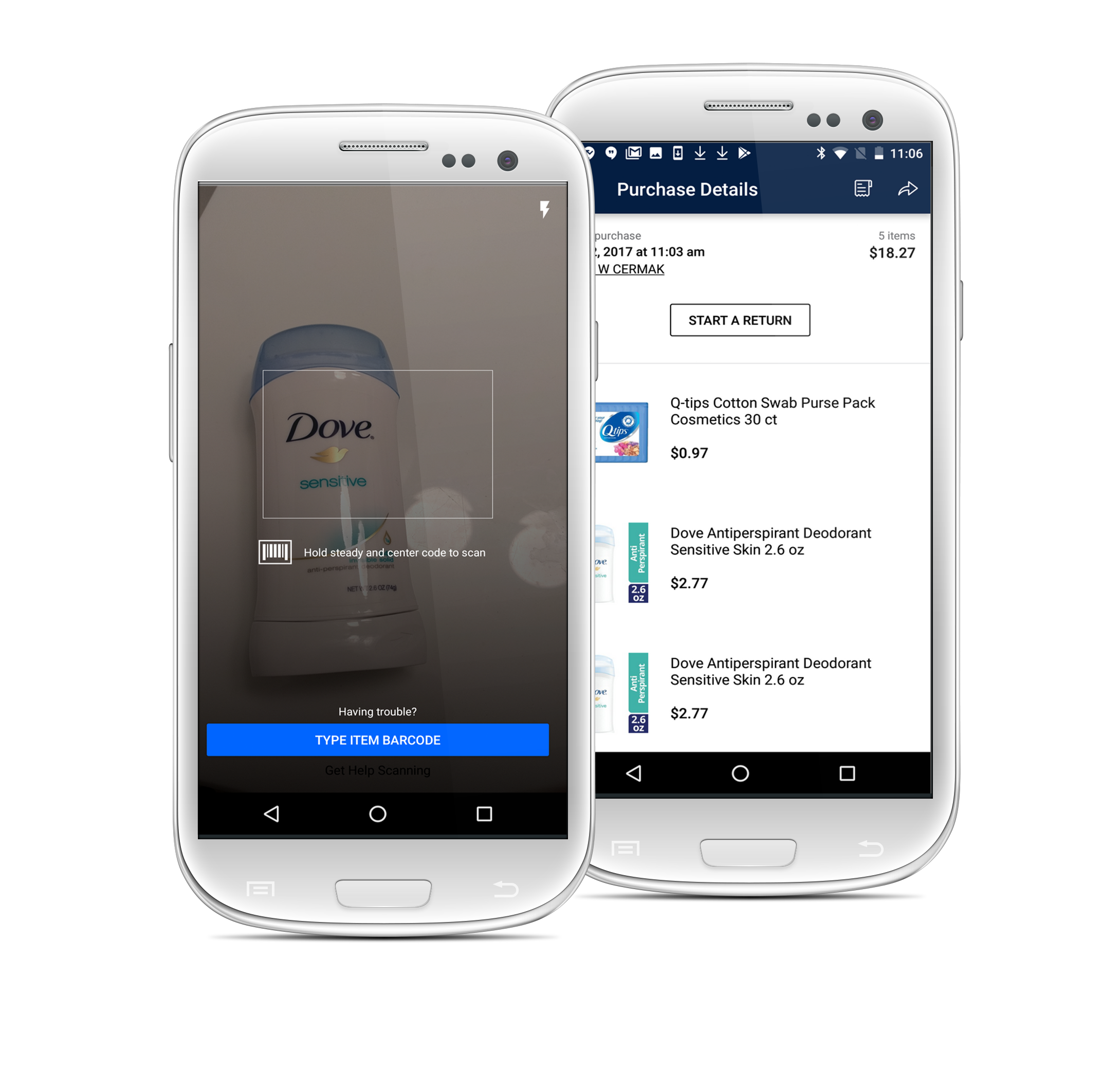
PROBLEM:
The Walmart app had been receiving negative app store reviews because customers wanted to be able to search their purchase history for receipts, but couldn’t, making returning an item in-store using a digital receipt extra difficult:“Please bring back the search feature! I was trying to do a return and had to go through several receipts to find the item. The search feature for our digital receipts was really convenient before. Please bring it back.”
The Walmart app contains digital receipts for both in-store and online purchases, so in order to locate an item that she wanted to return using her saved receipts, our customer needed to remember how she purchased the item, scroll through the list of online or store receipts, remember when she purchased the item, and then tap into each receipt to look for the item in the list. This was especially daunting because:
-
Saved receipts can date back as far as 2012 and some customers have as many as 200 saved receipts.
- Store receipts have an average of 7 items per receipt but can have as many as 100—this currently makes finding a previously purchased item on a receipt time-consuming and annoying.
Saved receipts per customer.
Our hypothesis: Creating an item-focused entry point for beginning the return process will reduce the number of negative App/Play store reviews that mention difficulty finding receipts.
MY ROLE:
Interaction DesignerAs the Design Lead for all things receipt-related on our iPhone and Android apps, I acted both as a facilitator guiding the distributed cross-functional team to come up with a feature concept that met the brief, as an individual contributor creating detailed cross-platform wireframes, and as the lead ensuring the feature was delivered as we imagined and designed.
IMPACT:
- Walmart app users stopped leaving negative App and Play Store reviews mentioning frustration around finding receipts.
- The “UPC scan” approach to searching a combined in-store/online purchase history for items was unique to retail apps at the time, and we were granted a Utility Patent for Scan UPC to Search (US 10417231).
How might we make finding an item to return amongst our customer’s saved receipts simple and even delightful?
PROCESS:
We knew we wanted to bring receipt search back to the Walmart app and combine online and store receipts into a single list, but we also wanted to do something magical to improve that finding process, so we decided to use a combination of scenario based design and directed brainstorming to fuel our ideation.Leveraging Team Knowledge for Ideation
First, because ‘magic’ often involves leveraging specific technical capabilities (and our engineering team was the most informed about the latest mobile tech), I wanted to leverage that expertise in coming up with a delightful solution. I facilitated a directed brainstorm and dot vote session with the distributed cross-functional team, laying groundwork with existing research & defining the problem to solve, then offering the team a prompt:
“What is the magical thing our customer does with the app to locate an item in her saved store receipts?”
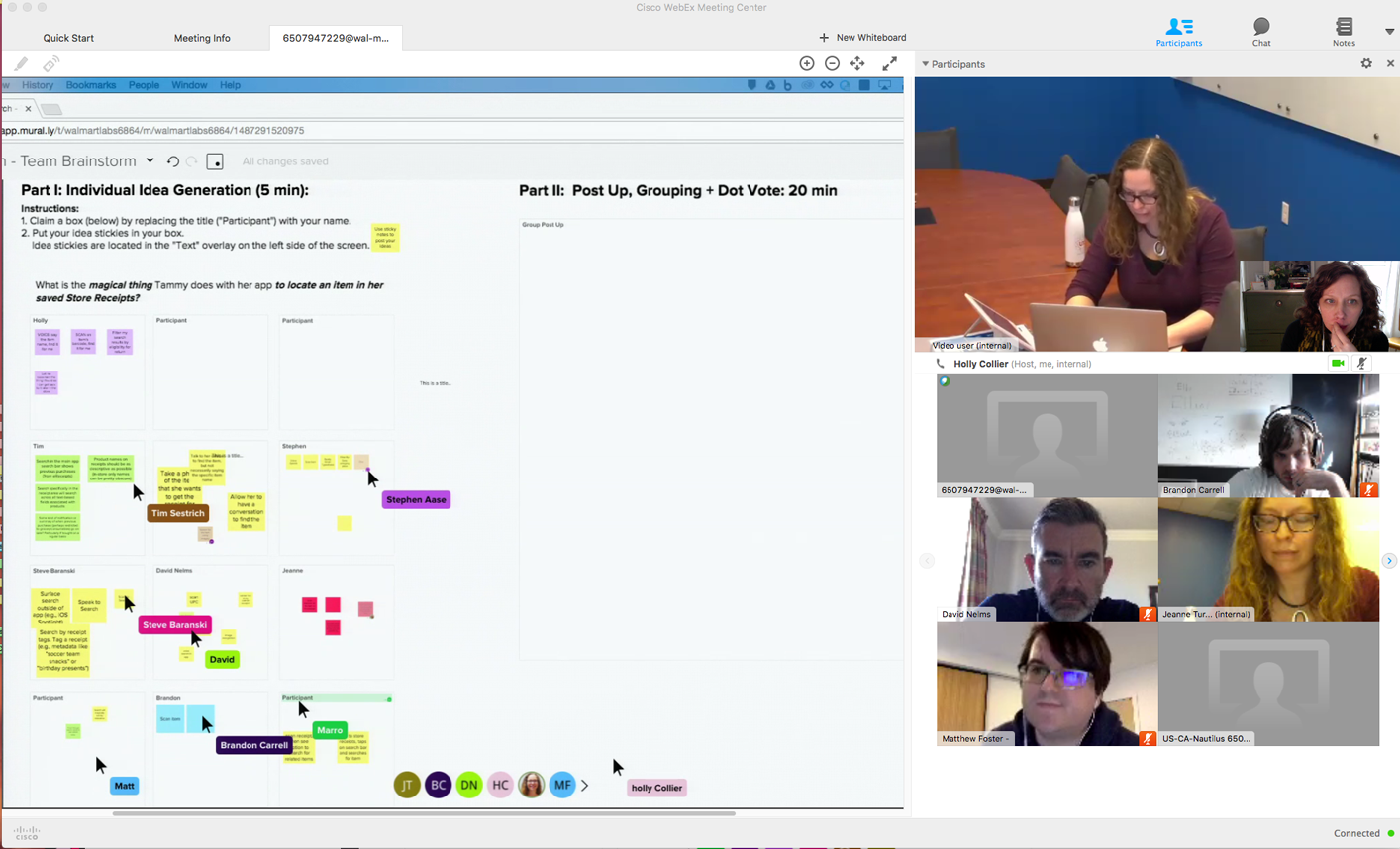
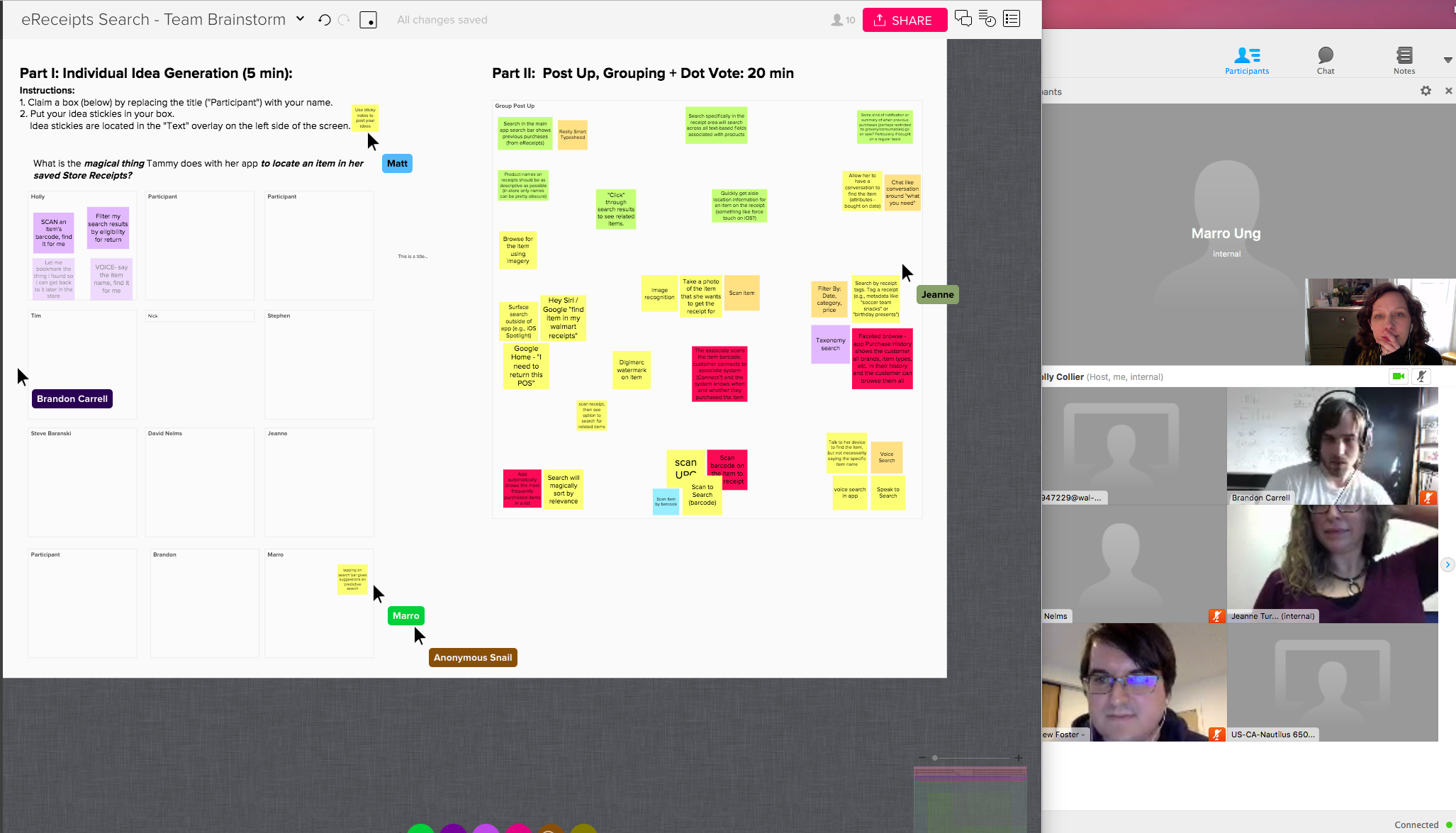
Facilitating a directed brainstorm in Mural with the cross-functional team.
As a result of the brainstorm, the team identified voice search and scanning a UPC as the most magical & feasible options.
Creating Scenarios to Marry Magic with Customer Needs
Next, I brainstormed believable customer scenarios with my UX & product partners to connect the magic from the brainstorm to real customer needs. The ideas covered a range of customer contexts, magical moves and end goals (returns, rebuying, and locating an extended warranty for an item). I wrote the scenarios, identified the data & functional needs for each by breaking them down, and then shared the output with engineering and product for feasibility review and prioritization. We identified scanning an item’s UPC in order to find the receipt in the customer’s combined purchase history as our MVP.
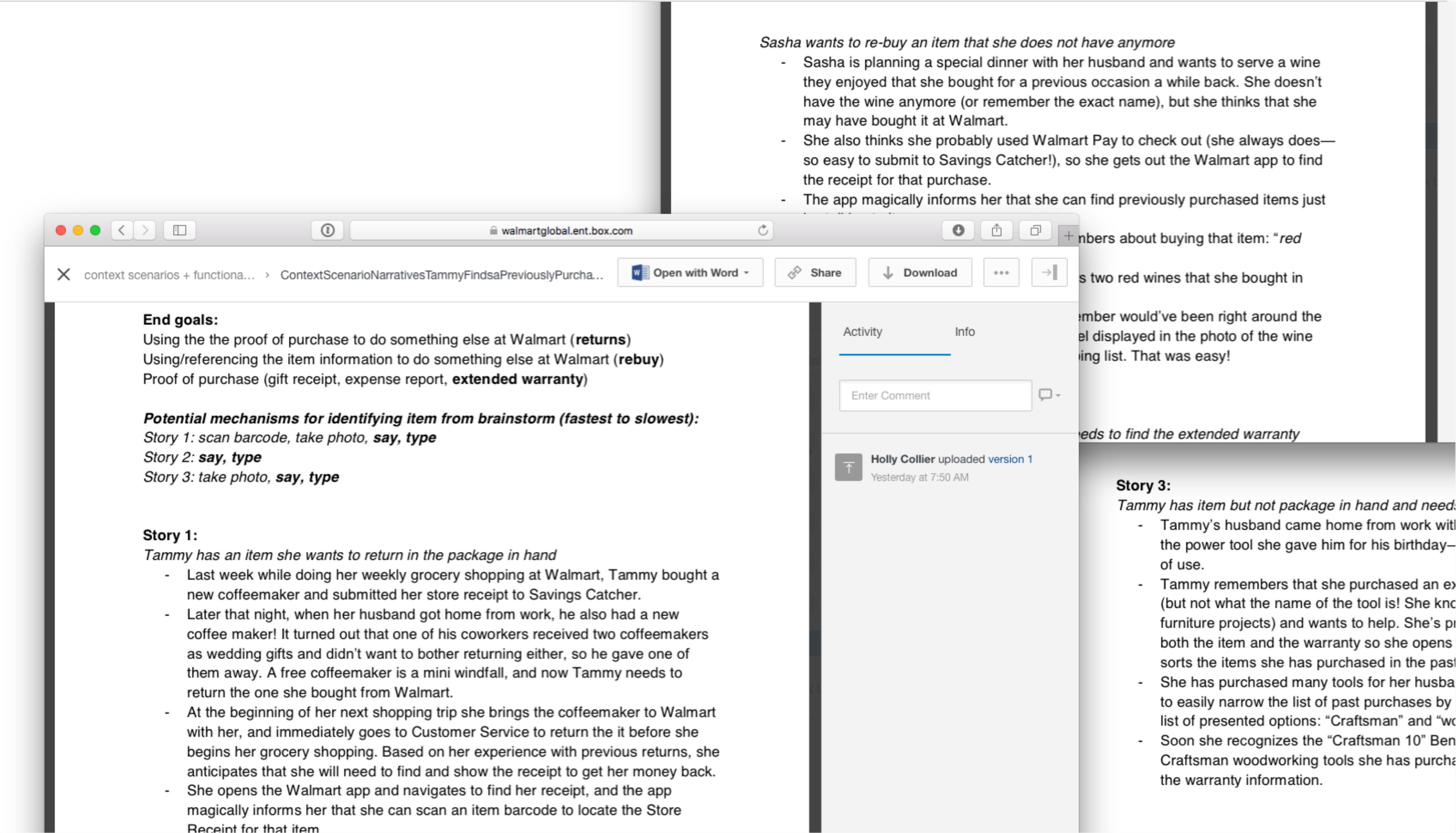
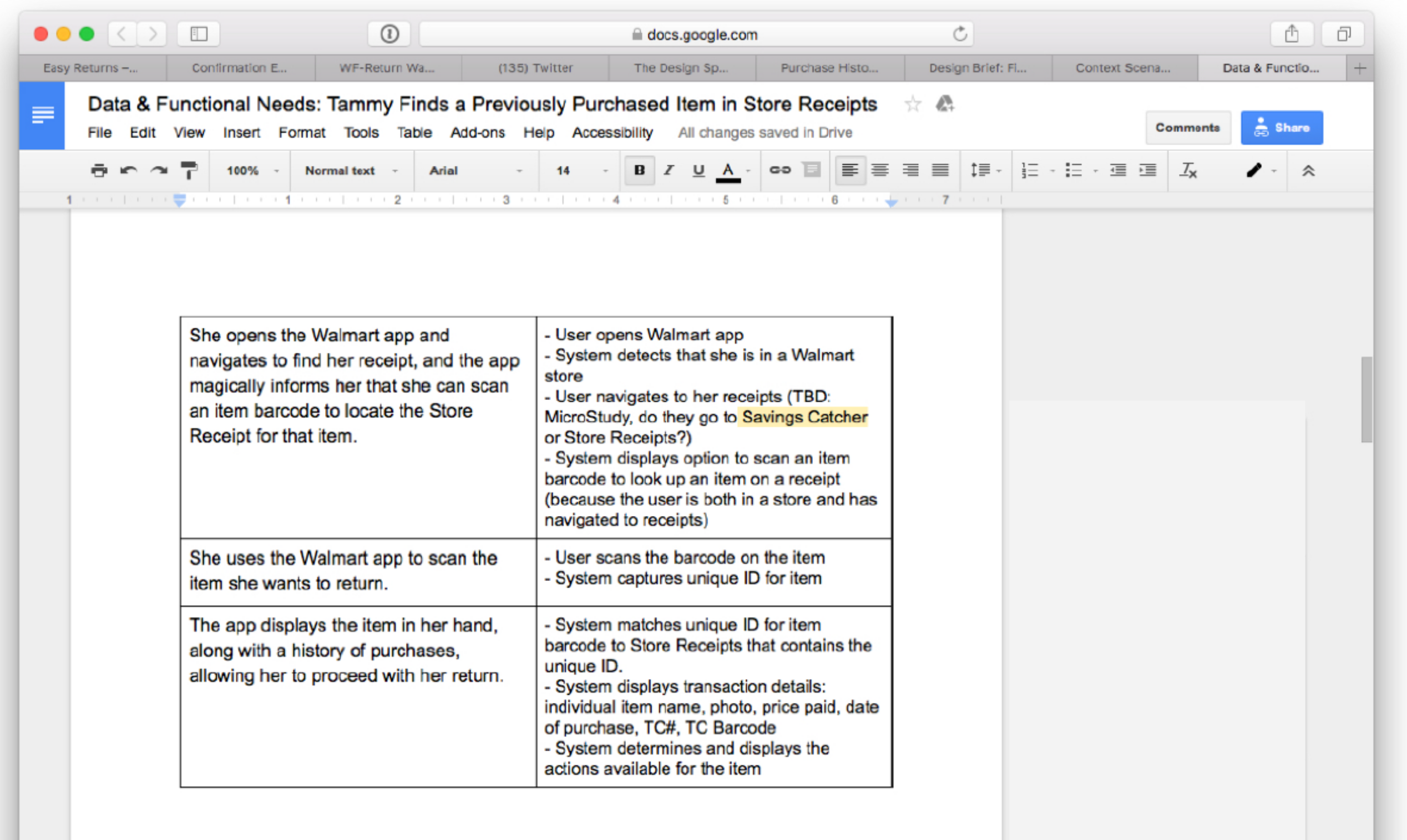
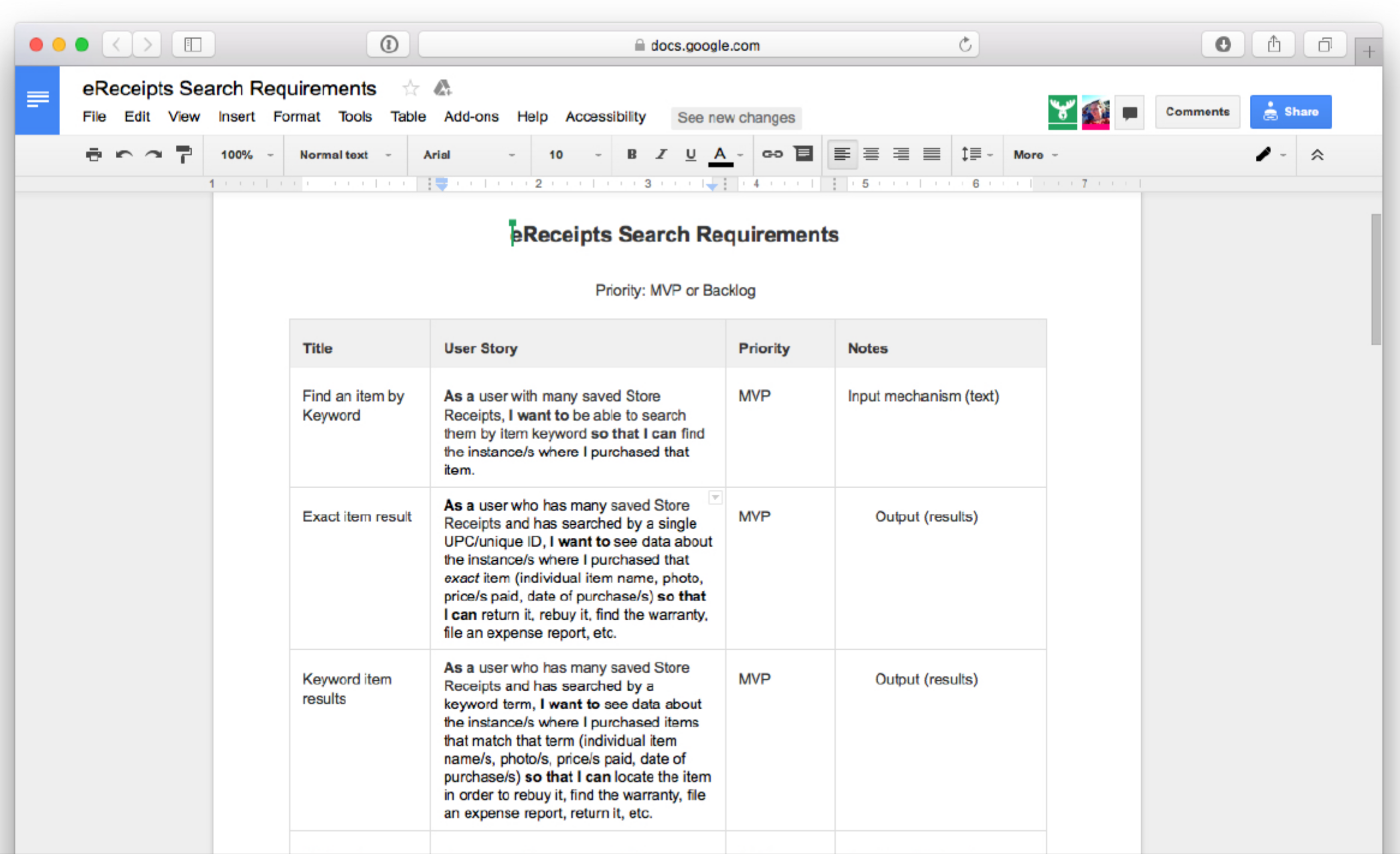
Moving from scenarios to functional requirements.
Detailed DesignI created wireframes describing how the UPC search feature would work: The customer would go to her purchase history in the Walmart app and simply scan the barcode on the item she wanted to return. The Walmart app would examine both her in-store and online receipts and return any receipts containing that UPC.
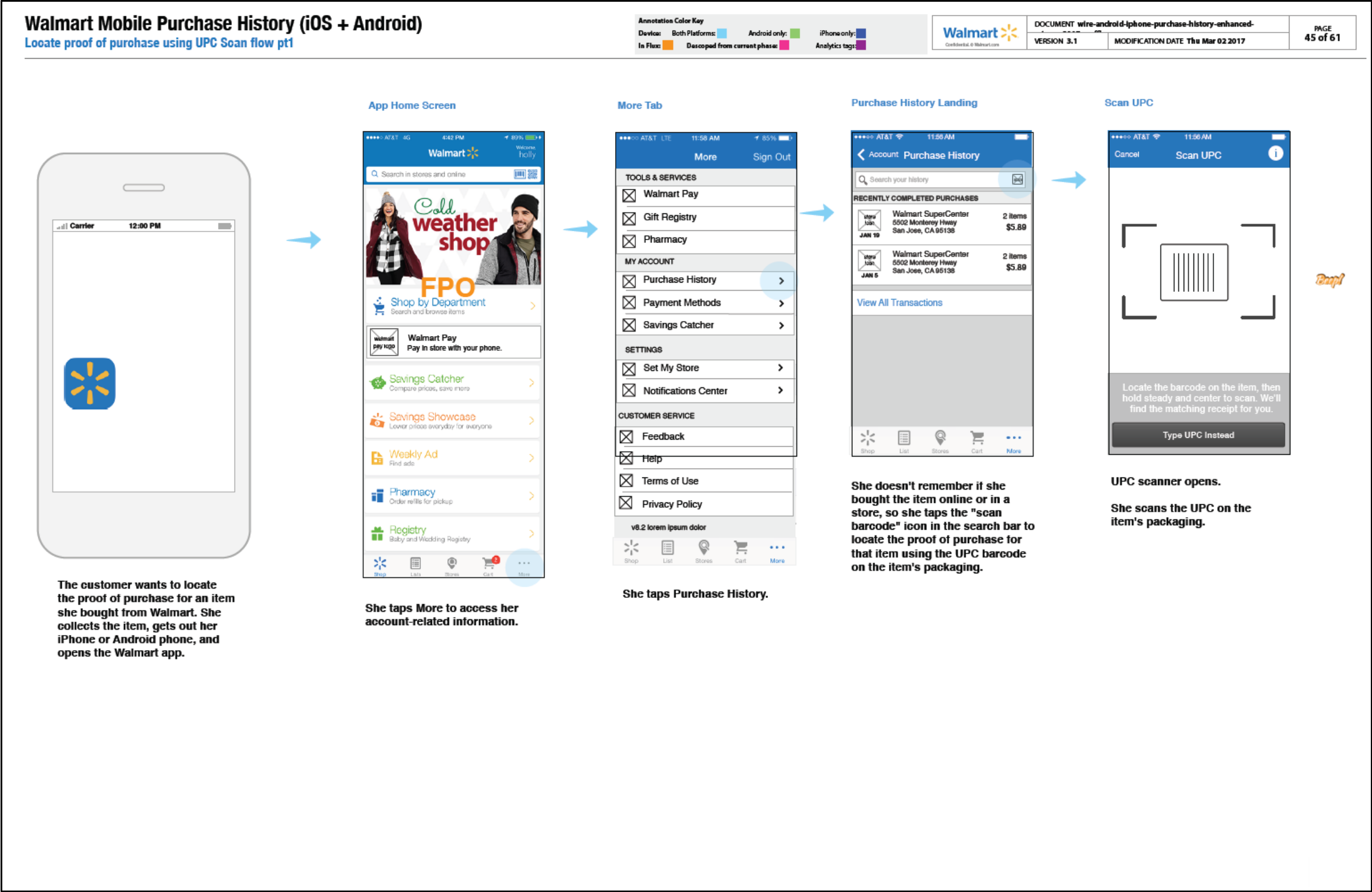
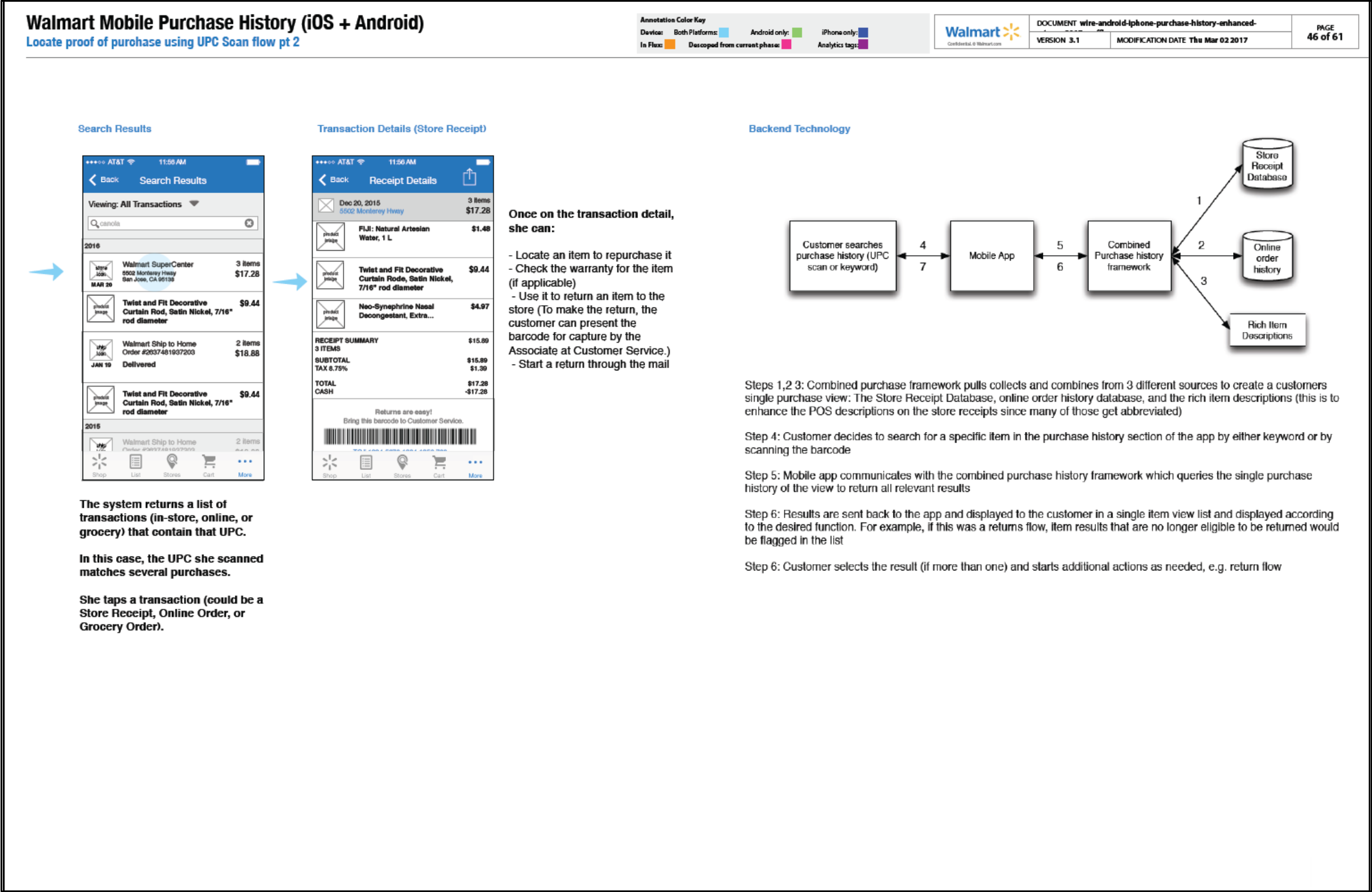
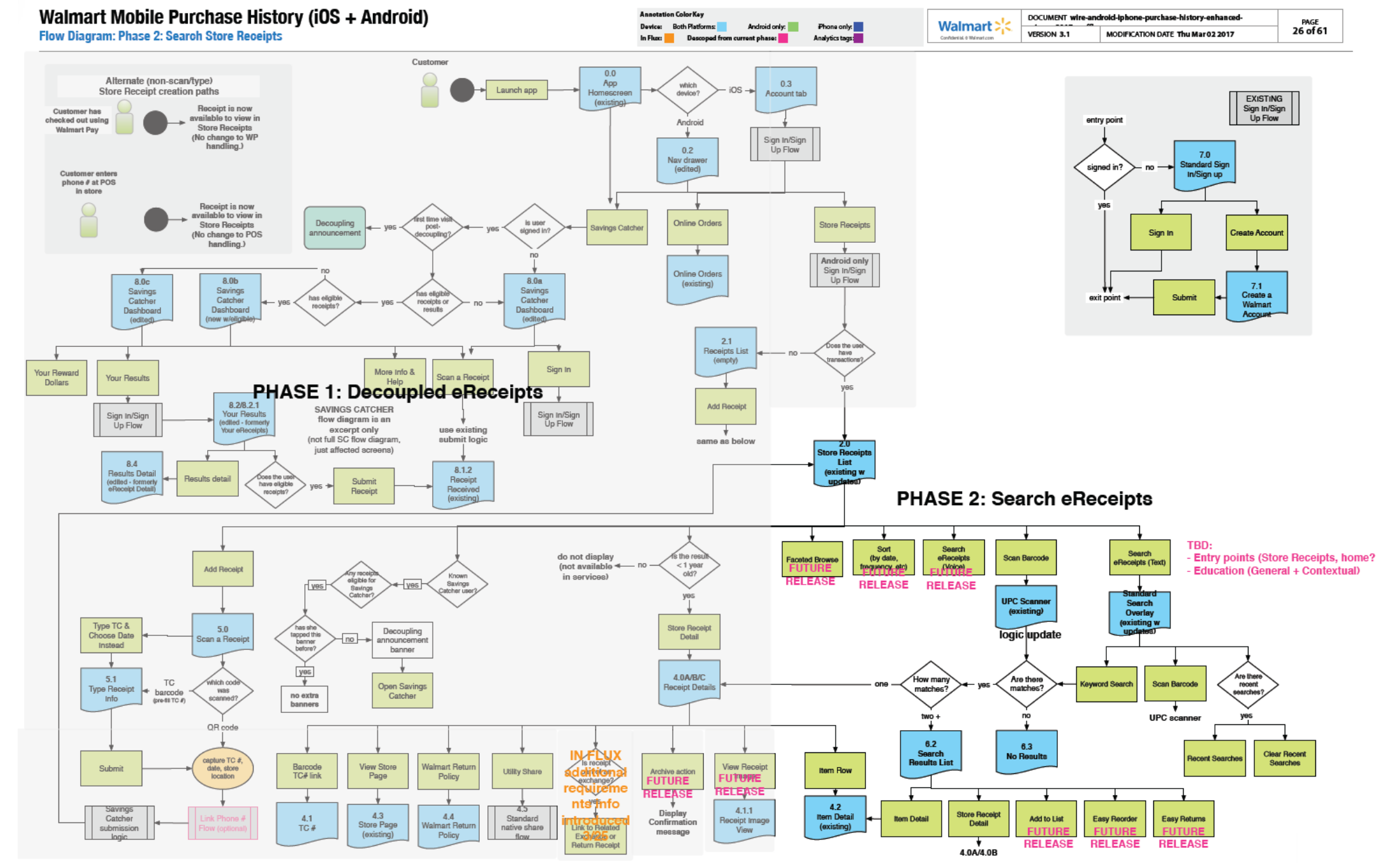
Wireframe excerpt covering core UPC scanning flow, userflow diagram.
To bring the feature over the line, I worked with my visual design partner to bring the concept to life, collaborated with engineering to troubleshoot issues during development and conducted QA to ensure that our feature worked as designed.
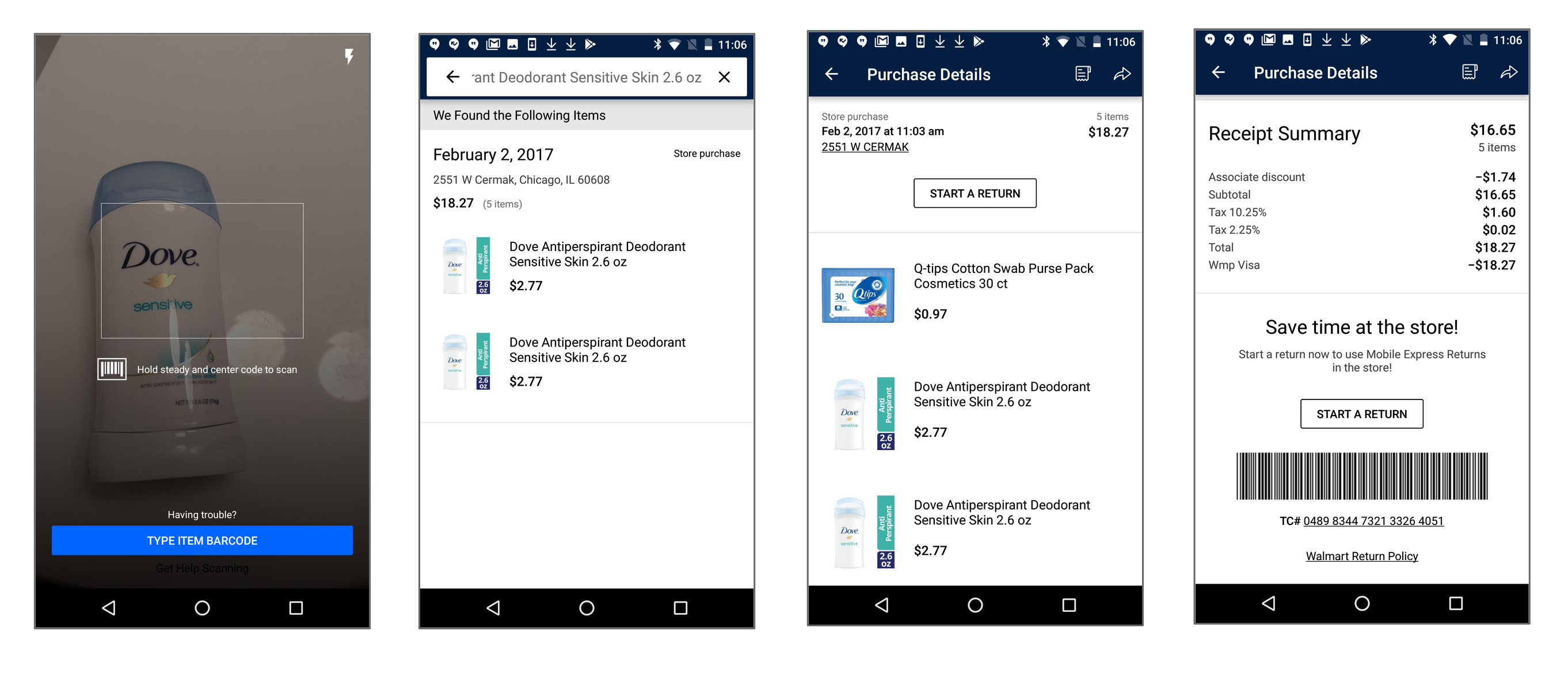
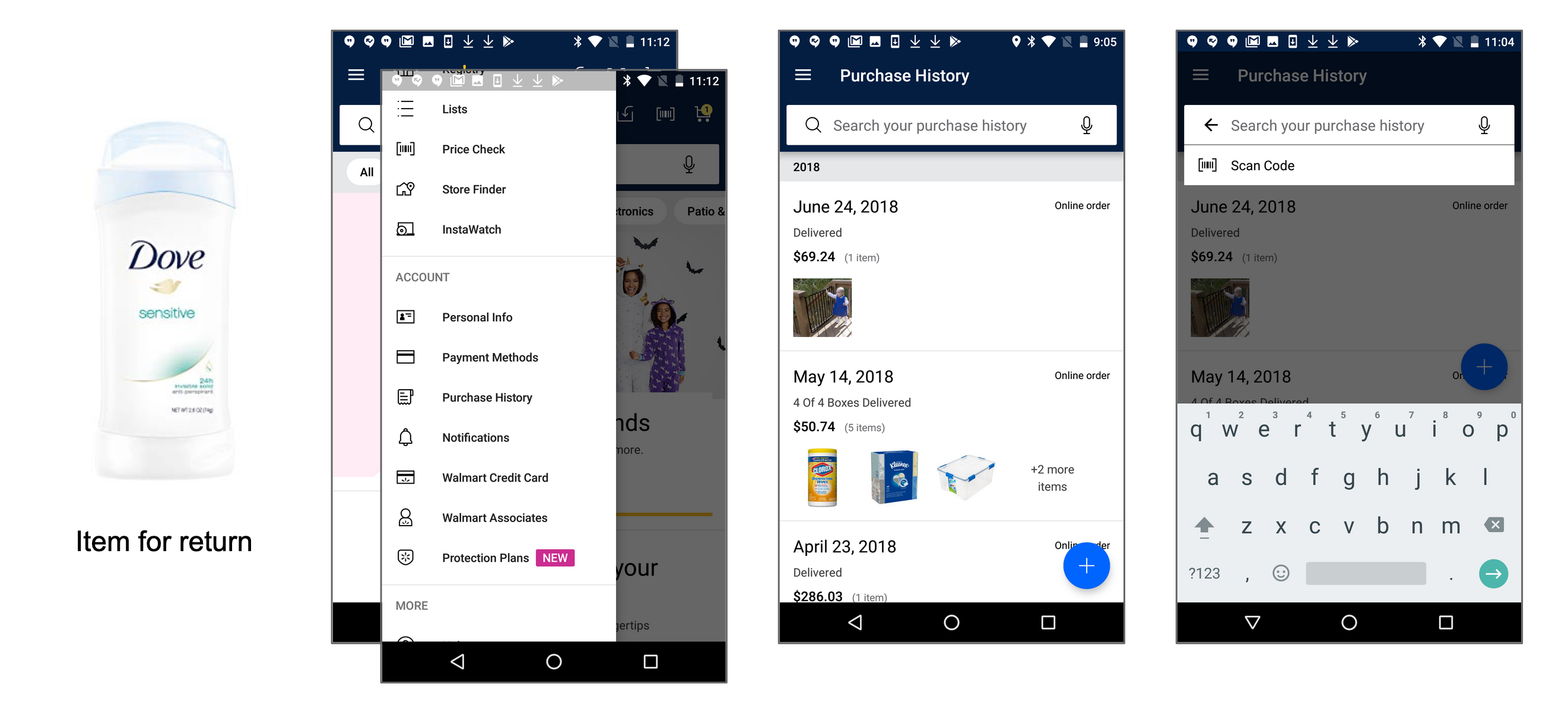
Final visual design for UPC scanning flow.
RESULT:
We stopped receiving negative App and Play Store reviews mentioning frustration around finding receipts. The “UPC scan” appraoch to searching a combined in-store/online purchase historywas also unique to retail apps at the time, and we were granted a Utility Patent for Scan UPC to Search (US 10417231).Download the Walmart app:
App Store
Google Play Store